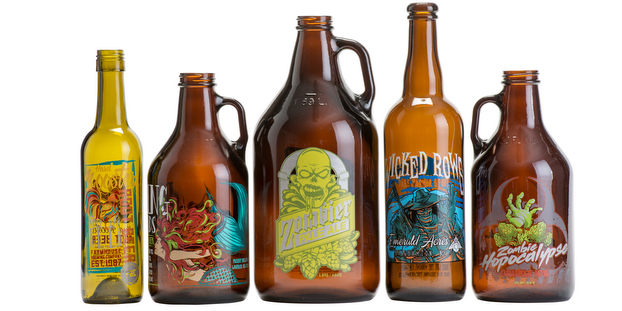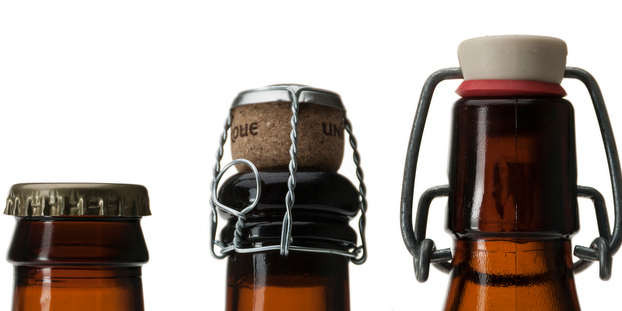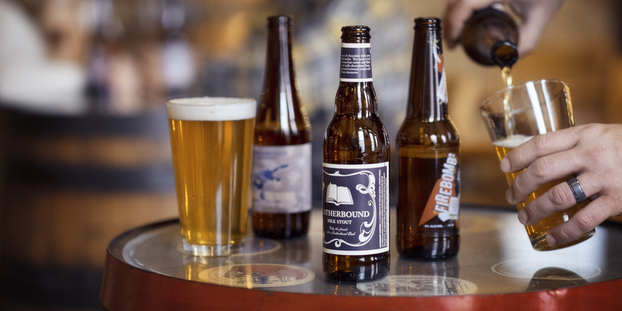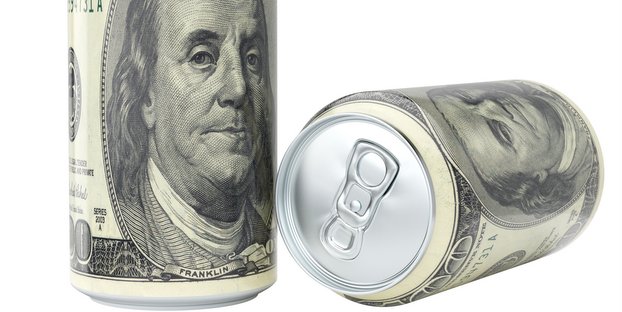
The headline news in craft beer packaging the last few years has been the adoption of cans. More craft brewers are canning than ever before thanks to improvements in the packaging (better quality) and the influx of mobile canning operations.
Headline abundance has a counter effect though. While the trend is real, media saturation tends to overstate the reality somewhat. It’s like that old story of when shark attacks get in the news. People start to worry about being killed by a shark, despite there being greater odds that a vending machine topples over and kills them.
So, yes, a lot of brewers these days are going with cans, but a ton of craft breweries are also going with bottles too. Remember, there are just A LOT of brewers out there, so any single category could be considered a trend, if hyped enough. Bottles just don’t receive any hype because they have always been here. Bottles are just kind of assumed, but assumption doesn’t speak to growth. According to the latest IRI data, glass continues to grow in high-end beer segments like imports, FMBs and craft, and that trend is expected to continue going forward.
“We are not changing our forecasts for glass production or procurement because we are still seeing growth in glass containers in the beverage industry,” said Bobbi Stebbins, sales and marketing project leader, Waterloo Container (which you can find through the Kinnek purchasing platform too). Stebbins relayed that there is definitely a noticeable increase in canning in their region, but this movement is not without its own obstacles.
“The high cost of equipment for canning is prohibitive for most startups and smaller craft breweries and cideries,” she noted. “Brewers generally start with kegs and move to bottles or cans only after size and finances allow. There are a lot of options for automatic and semi-automatic glass bottling equipment that span a large price range. While there are a lot of issues at play in the decision [size, finances, goals, marketing], canning equipment is ultimately very costly compared to bottling equipment.”
RELATED: Best of bottles, growlers and cans: The year’s top craft beer packaging stories
Minimums are no small issue
The canning boom is not without its issues for some smaller craft brewers. The boom in demand is not being fully met by supply, and larger can providers have focused more on their larger accounts, raising minimums and some (we’ve heard anecdotally) have just flat out told some previous customers that they would no longer supply them with cans. These are not issues when packaging in bottles. Waterloo Container, for example, has no minimums for bottle purchase on its stock items.
“Because we keep such a large, varied inventory in house, we can offer even the smallest craft brewer immediate access to a single case or an entire truckload if that’s what they need,” Stebbins said. “We work hard to assist startups with their bottling needs. Our partnership with a glass manufacturer helps us achieve this.”
“Any brewer can get into bottles,” noted Judi Gribble, marketing communications manager in the beer category for O-I, one of the largest suppliers in the country. “Our Packaging Solutions group sells beer bottles in very small quantities. If a brewer does not have a bottling line, there are mobile bottlers that come directly to the brewer and fill the bottles on-premise.”
Forming a relationship with your supplier and providing an accurate forecast will only help. Since glass production (manufacturing campaigns) requires advanced planning, Stebbins encouraged established clients to forecast their needs for the coming year to ensure there is an adequate amount of their glasses on-hand.
“This is as important for the niche and boutique brewers as it is for our larger clients,” she said.
No inventory space? Be sure to work with a vendor that can provide inventory management and storage or simply fulfill your order as you place it. Waterloo has over 275,000 square feet of storage space, which they use to help their clients manage their ware.
RELATED: Packaging on a budget: Four solutions your brewery should consider
“It can be reassuring to a brewery to know that their ware is secured and available to them immediately as their own space opens up,” Stebbins said.
“If they have their own bottling lines, they can have the bottle delivery trucks scheduled so they pull the bottles off the truck and put them directly on the line,” Gribble said.





Craft beer bottles: We look at purchasing trends and their value versus cans https://t.co/RmngRbRPFY https://t.co/nL6Ks6l3eD
RT @CraftBrewingBiz: Craft beer bottles: We look at purchasing trends and their value versus cans. https://t.co/NAcpcI4Jop
BtoBeer liked this on Facebook.
https://t.co/LSMx1SNOLt
RT @CraftBrewingBiz: Craft beer bottles: We look at purchasing trends and their value versus cans. @GlassIsLife https://t.co/WPVHbOzIlt htt…
Craft beer bottles: A look at purchasing trends and their value versus cans https://t.co/2A77Q9pNim
What is the value of packaging craft beer in bottles versus cans? https://t.co/nYjxiV8h0M via @craftbrewingbiz
RT @CraftBrewingBiz: Craft beer bottles: We look at purchasing trends and their value versus cans. https://t.co/NAcpcI4Jop
Jeff Platt liked this on Facebook.
RT @CraftBrewingBiz: Craft beer bottles: We look at purchasing trends and their value versus cans. https://t.co/NAcpcI4Jop